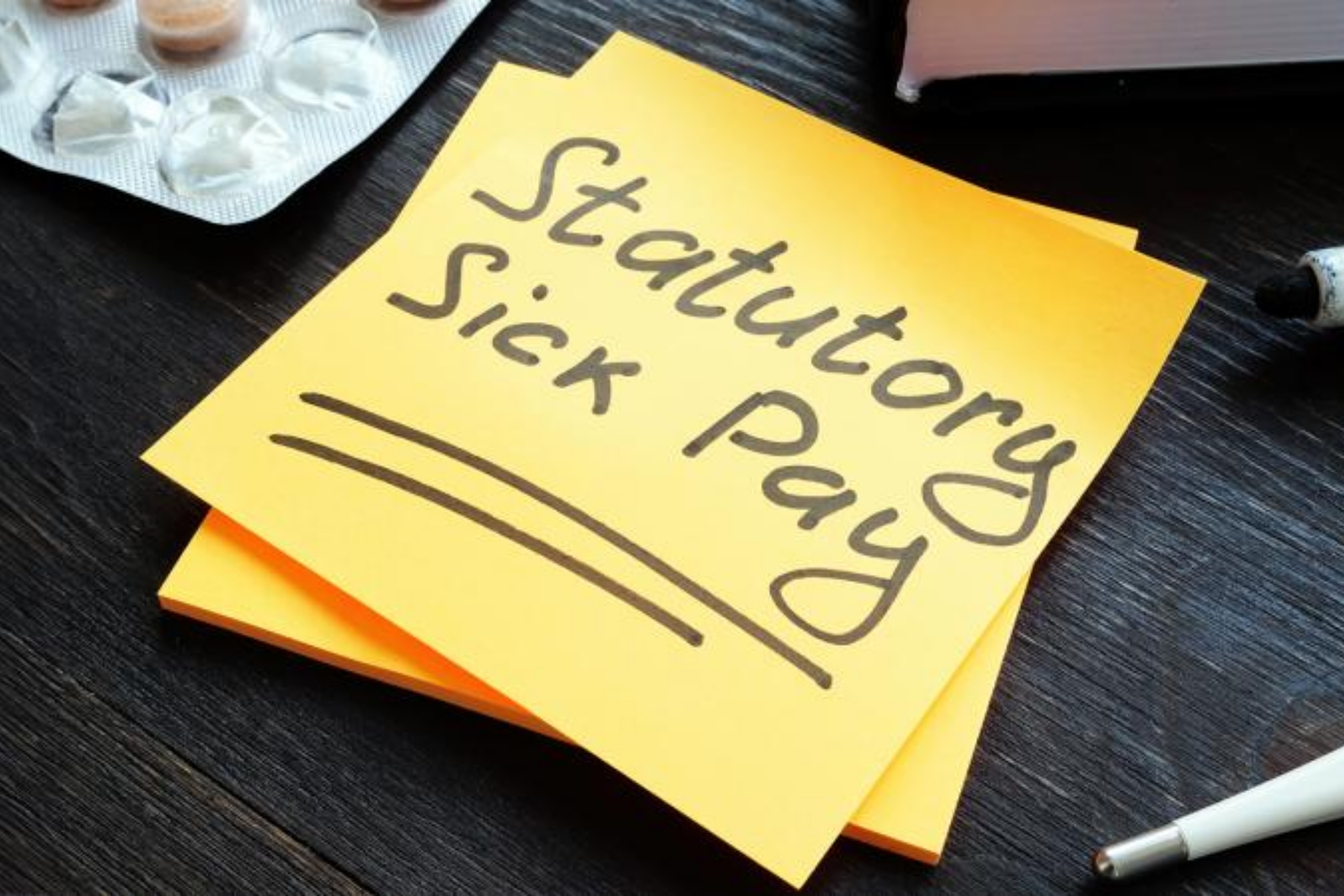Keeping In Touch Days: Your Maternity Rights

What Is A KIT Day?
KIT days - Keeping In Touch days - allow maternity leave recipients to work for up to 10 days during their maternity leave, without having their maternity leave interrupted or extended. KIT days, when used wisely, can be a genuine asset to your company, keeping workers feeling included throughout their time off and assisting them in getting back to work quickly.
Days for keeping in touch are indeed a massive benefit. They offer your financial account a lift in addition to maintaining your professional connections and retaining your feet in the water.
If you have any questions, you can ask your payroll service provider.
Similar to keeping in touch, KIT days are SPLIT days - Shared Parental Leave In Touch Days. During their Shared Parental Leave, individuals are permitted to work as many as 20 days. These are known as shared parental leave in touch days, or SPLIT days. These days are in addition to the ten “keeping in touch” days that are already offered to workers on maternity or adoption leave.
In essence, you can resume your job for a few days while getting paid for it; thanks to these less familiar but essential days. They are intended to help you stay in touch and ease a return to employment and are compensated at the individual’s statutory pay rate.
Employee & Employer Rights On KIT Days

Up to 10 full KIT days may be worked by a worker at any given time while on leave. As a result, they are permitted to work for a maximum of ten days without ending their maternity leave or jeopardizing their statutory maternity pay benefits. This benefits both the employer and the employee. When an employee works multiple jobs, their KIT days are applied to each position differently.
KIT days can be a suitable resource for staying in touch with workers who are on leave and can make their return to work simpler than it would normally be. What a worker does on a KIT day is mostly up to an agreement between the employee and employer; they might complete whatever tasks they would typically be expected to complete under their normal contract of employment, gain training, or do something else that will allow them to stay in contact with the company.
It should be noted that calling your employee to the office or even doing so over call to discuss their return to work is not a part of working and, therefore, has no effect on their maternity leave in any other way or qualify as a KIT day.
How Many Kit Days Is An Employee Entitled To?
Employees are permitted to take a total of up to ten days during maternity leave, adoption or even extra paternity leave. They enable workers to remain connected to their jobs without affecting their maternity leave or right to maternity allowance.
It’s crucial to remember that if an employee is working more than 10 KIT days, their maternity leave will terminate and they will no longer be eligible for any future statutory maternity pay. Therefore, it’s crucial to inform any employee who is scheduled for leave of this cap and maintain meticulous records.
Difference Between SPLIT & KIT Days
Shared Parental Leave in Touch Days, commonly known as SPLIT Days, are also available to those who are on shared parental leave. Despite the fact that it is somewhat more flexible, the foundation is essentially similar to the KIT day plan. Without affecting their Shared Parental Leave, each employee may take up to 20 SPLIT days.
KIT days and SPLIT days are both offered. The unused entitlement, though, cannot be carried over into a time of shared parental leave if the worker does not utilize all of the KIT days throughout their maternity leave period.
Individuals who exhaust their ten KIT days may provide notice to cease their compulsory maternity leave immediately and begin their 20 SPLIT days by switching to shared parental leave. This will allow them to continue working part-time, say one day a week, till the Shared Parental Leave comes to an end. Read about the SSP rate in the UK here.
How Much are Employees Entitled To Be Paid For KIT/SPLIT days?
How companies should handle contractual remuneration for KIT days worked is one problem that neither the Act nor any other regulation addresses. This implies you are able to either compensate an employee their basic rate of pay or an additional sum that you have mutually decided upon. However, for any work performed while on leave, employees are entitled to at least the National Minimum Wage as per the statutory maternity pay. Although it is believed that you would be paid at your regular rate on KIT days, this is not required by law.
After agreeing on a daily KIT rate, you must make a decision regarding how to pay SMP on KIT days. Except if you choose to do so, you are not required to pay SMP on top of the agreed-upon daily rate. Instead, you can compare your KIT day profits to your SMP. Even if you have some pay option, you must make sure that you do not pay your workers any less than the minimum wage. Inform your employer in advance if you need to pay for childcare or transportation to work so that it can be taken into account.
Any contractual payments above SMP should be discussed with your company before you report to work. This may frequently represent your daily wage for an entire working day.
The payroll for the entire month you worked should include payment for KIT days in the same manner as your regular contractual compensation. This indicates that unless this aligns with the next scheduled date for payroll, you shouldn’t have to wait till the conclusion of your leave to receive your compensation.
Common Questions About Kit Days, Maternity Leave & Pay
What Type Of Work Can I Do On A Kit/split Day?
Any task that you’d typically complete as required by your contracts of employment, such as training, seminars, presentations, and any behaviour in relation to the workplace, can be considered a KIT/SPLIT day. On a KIT day, you are allowed to work in any manner. This often refers to any tasks you would typically carry out as part of your responsibilities.
It’s usual for parents to use their KIT days to gradually return to work when their maternity leave comes to an end by working part-time during those days before beginning back full-time. This still needs to be considered a full KIT day, even if you only work a portion of the day. Until this has been previously agreed upon with your boss, going to the office to socialize with coworkers and introduce them to your child would not typically be considered a KIT day.
Do I Have To Work A Kit/split Day?
No, an employee can not be made to work any KIT/SPLIT days, however, you might think about how much money you will make on those days. If you are currently incapable or unwilling to work, it shouldn’t be taken against you at work.
Can I Use Kit Days To Work Part-time Before Returning To Work?
Yes, you and your supervisor must once again decide on it. If you volunteer to test it out using KIT days, it can assist you and your employer in determining how well it functions, and it might support your desire to work part-time thereafter. It’s crucial to pre-agree on the pay rate for every KIT/SPLIT day.
When your absence is up, you should seek flexible work if you want to continue working part-time. Let your company have a minimum of three months to think over your request about the same job.
Will I Be Paid My Normal Pay For Kit/split Days?
One issue that neither the law nor any other policy addresses is how businesses should manage contractual pay for KIT days worked. This means that you are able to pay an employee either their standard rate of pay or a different amount. However, it should be a reasonable contract that both the employee and the employer have agreed upon. Employees are, however, entitled to be paid at least equal to the National Minimum Wage for any work completed while on leave. Despite popular belief, you are not legally obligated to be paid at your regular rate on KIT days.
When Can I Take Kit Days?
KIT days may be used at any time while you are on maternity leave, but they cannot be used to make your maternity leave last longer than the allotted 52 weeks. This basically implies that you are allowed to work a KIT day prior to the birth of your child.
The only limitation is that throughout the two weeks of required maternity leave following the delivery of your baby, you are not allowed to work KIT days. You should be aware that the required maternity leave is now four weeks long if you work in a business. KIT days don’t have to be taken back-to-back; they can be used either during paid or unpaid maternity leave.
What happens if more than 10 KIT days are worked?
If you work more than ten KIT days, it is considered a return to work. This means you won't be entitled to statutory maternity leave for that week or potentially subsequent weeks based on the employer's policy.
Are KIT days available during shared parental leave?
Yes, employees can avail of KIT days while they are on shared parental leave. This allows employees on maternity or shared parental leave to work up to 10 days without losing their leave benefits or pay during the maternity pay period.
Which regulations cover KIT days?
KIT days are covered under the Shared Parental Leave Regulations, 1999. Section 12A of the regulation allows employees to work up to ten KIT days while they are on maternity leave.
This allows employees to work without affecting their leave entitlement or statutory pay, provided that they don't exceed the specific limit within the employee's maternity leave. Here are some points you must know about KIT days:
- Remember that KIT days are agreed upon between the employer and employee.
- KIT days can be used for meetings, training sessions, and other work-related activities.
- KIT days allow employees to keep reasonable contact with the workplace.
- KIT doesn't impact other leaves.
- If the employee is not paid fairly during the leave, they can claim for unlawful deduction of wages.
Which regulations apply to pay for KIT/SPLIT days?
The regulations that apply to KIT/ SPLIT days in the UK are The Shared Parental Leave Regulations (2014) and The Maternity and Parental Leave Regulation 1999.
SPL Regulation 2014 applies to shared parental leave, which allows employees to work up to ten days during their shared parental leave period without losing entitlement to statutory pay or leave.
The Maternity and Parental Leave Regulation 1999 governs employees on maternity leave. Under these rules, employees on maternity leave can also work up to ten days, and the same statutory maternity pay leave provision applies during this period.
This ensures the employee can stay connected with the workplace without losing their statutory leave benefits.








Comments